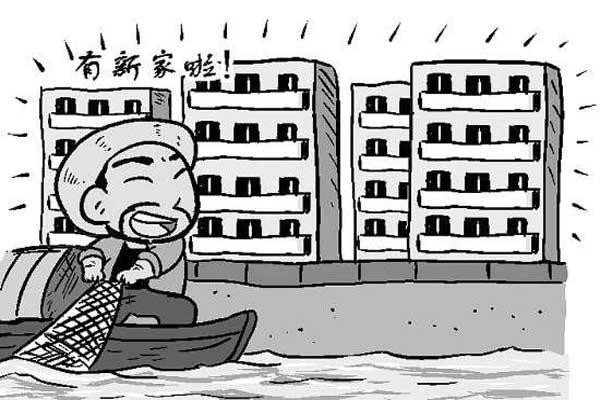How is the subsidy for the reconstruction of dilapidated houses in rural areas made up, and why do you have more and his less?
The reconstruction of dilapidated houses in rural areas is a beneficial policy put forward by the state in 2008 to solve the basic housing safety problems of the poor people in rural areas. And took the lead in Guizhou as a pilot in 2008, fully rolled out after 2009, the subsidy standard is also divided into two stages and different, in addition to the central financial subsidy part, all localities also provide part of the financial funds to subsidize according to the actual situation. In the process of subsidy, it is also adjusted according to the grade of dilapidated houses and the situation of dangerous households, so there are different standards in different areas, and different dangerous households in the same area also have different standards.

When the dilapidated house renovation policy was piloted in Guizhou in 2008, a survey was carried out in advance, and then arrangements were made according to the application situation of the dilapidated households. In the process of finding out, rural houses are divided into four grades A, B, C and D, that is, there are no dangerous points, dangerous points, local danger and overall danger. Among the four grades, only C and D belong to dilapidated houses, while in Guizhou, dilapidated houses are divided into first, second and third grades. Generally, the dilapidated houses arranged every year are the dilapidated houses that are recorded in the survey statistics in 2008 and then entered into the system in each year.
The subsidy standard is not egalitarianism, but is divided according to the actual situation of dangerous households. Different critical households and different grades of dilapidated houses have different standards.
The subsidy standard of the first stage is from 2008 to 2011 (of which the central financial subsidy is 5000 yuan in 2008, 5000 yuan in 2009, 6000 yuan in 2010 and 6000 yuan in 2011. And on this basis, a subsidy of 2000-2500 yuan will be increased for each of the front-line poor farmers and building energy efficiency demonstration households in some border areas. At the same time, various localities also increase subsidies according to the actual situation and adjust the subsidy standards according to the situation of dangerous households and the ways of transformation, which are mainly for reconstruction, repair and reinforcement. The specific subsidy standards in Guizhou are as follows:
A: the first-class dilapidated house of the five-guarantee household is 20, 000 yuan per household; the second-class dilapidated house of the five-guarantee household is 5000 yuan per household; the third-class dilapidated house of the five-guarantee household is 3000 yuan per household
B: low-income households have first-class dilapidated houses, with an average subsidy of 20,000 households.
C: first-class dilapidated houses for families in need, with a subsidy of 10,000 yuan per household
D: the average household has a first-class dangerous house, with a subsidy of 5000 yuan per household.
E: low-income households, poor households, general households second-class dilapidated houses, per household subsidy of 3000 yuan
F: low-income households, poor households, general households third-class dilapidated houses, per household subsidy of 2000 yuan.
The subsidy standard of the second stage: from 2012 to the present (of which the central financial subsidy is 7500 yuan in 2012, 7500 yuan in 2013, 7500 yuan in 2014 and 7500 yuan in 2015. On this basis, subsidies will be increased by 1000 yuan per household in poverty-stricken areas and 2500 yuan per household in poverty-stricken border areas and demonstration households in building energy efficiency. Similarly, various localities will also make adjustments according to the way of transformation and the actual situation, and there are different standards in different situations. The specific standards in Guizhou are as follows:
A: the first-class dilapidated houses of five-guarantee households are subsidized by 22300 yuan per household, the second-class dilapidated houses of five-guarantee households are subsidized by 8500 yuan per household, and the third-class dilapidated houses of five-guarantee households are subsidized by 7000 yuan per household.
B: low-income households have first-class dangerous houses, and each household subsidizes 22300 households.
C: first-class dilapidated houses for families in need, with a subsidy of 12300 yuan per household
D: the average household has a first-class dangerous house, with a subsidy of 8300 yuan per household.
E: low-income households, poor households, general households second-class dilapidated houses, per household subsidy of 7000 yuan
F: low-income households, poor households, general households third-class dilapidated houses, per household subsidy of 6500 yuan.
This belongs to the per capita subsidy standard of provinces, cities and states, and in the specific implementation process, each county and city will also make appropriate adjustments to the per capita subsidy standard according to the actual situation such as the poverty level of critical households and the degree of housing danger. However, no matter how it is adjusted, it will not be lower than the above standard. Judging from the subsidies actually distributed to critical households, there are generally few counties and cities that have made adjustments, and it can be said that there are no such subsidies.
After talking about the subsidy standard, let's take a look at the conditions for applying for dilapidated house renovation. Generally speaking, the subsidy for the reconstruction of dilapidated houses in rural areas is based on households, and the application is made by the head of household, but the applicant must have these conditions at the same time: first, he has local agricultural household registration and lives locally, and he is the owner of the property right of the house; second, it belongs to the dilapidated housing households who were recorded and recorded in the National Rural Housing Information system during the 2008 rural dilapidated house survey. Third, it belongs to any type of rural five-guarantee households, low-security households, poor households and general households.
In the next section, the editor will talk about how to apply in detail. Please continue to pay attention to Nong Ji. If you like, please subscribe to Nongji to see the information you can't see.
Text | Yamashiro
Welcome to subscribe to Nong Ji, a self-media platform that records the life of rural people and really tells the truth for rural people.
Reprint must obtain the consent of the author of this headline number and may not be reproduced without authorization.
- Prev

The man was cutting wood in the woods and saw something strange. He looked closer and found it was it.
The man was cutting wood in the woods and saw something strange. He looked closer and found it was it.
- Next

Tongxiang Cooperative explores "Manor Tour"
Tongxiang Cooperative explores "Manor Tour"
Related
- A course of planting techniques and methods on how to grow carrots
- How to plant the latest tulips?
- Is it better to pick tea in the morning or in the afternoon? When is the best time for tea to be picked? what is the third or fifth tea?
- Launch Yuanxiao Happy combination Haocha + Tea Yuan healthy Taste
- Penghu Tourism "Fireworks 20 Parade with You"
- 2022 West Lake Happiness holds "Digital Revitalization Voucher" and draws iphone13 and laptop.
- Banqiao Fuzhou social houses are designed to change start-up combined with police elimination to create a safe and livable environment
- The convenient measure of "mechanical weeding" in Xinbei has been abused and the Agriculture Bureau has imposed heavy penalties on the illegal land consolidation.
- Changgeng University Joins Hands with Four Memory Factories to Rescue Memory Talent Shortage
- The list of Taiwan's top 100 MVP managers is listed by the Director-General of the Farmers' Association of Sanxia District.

